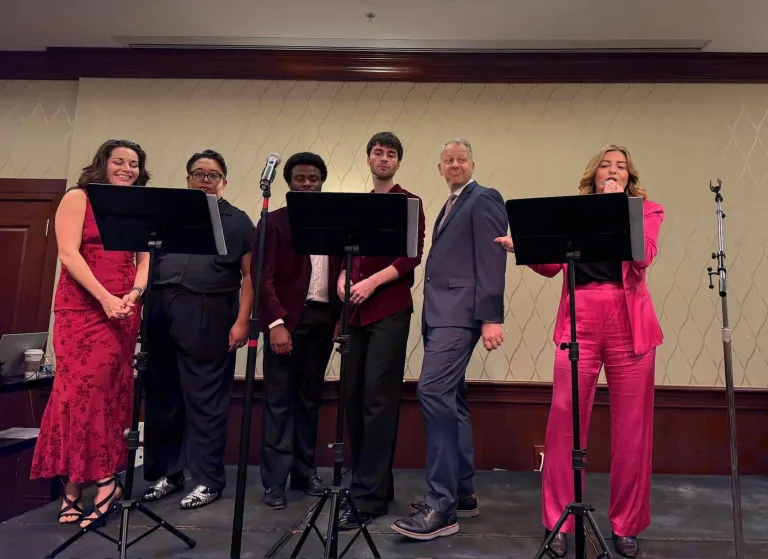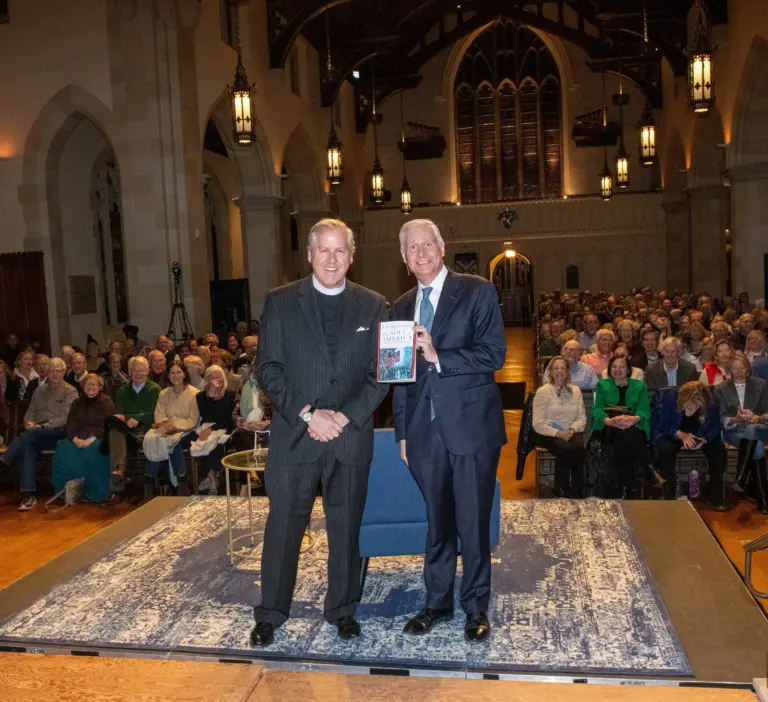By Anne White
In the calm after the November 5 election, Fred DeCaro, a Registrar of Voters in Greenwich, offered an intricate perspective on the dynamics at play. From fluctuating voter turnout to the efficacy of early voting, DeCaro’s insights provide a detailed look into the election administration in Greenwich.
“The early voting trend was interesting,” he noted. “Unaffiliated voters did not come out and vote early until close to the end of that process… they waited until close to the end to make up their minds.” According to DeCaro, when unaffiliated voters did participate, they showed up in larger proportions than either Republicans or Democrats.
Political events also appeared to exert an influence on voter turnout among registered Republicans. “There was a little bit of a bump in the Republicans coming out after Trump’s MSG event,” DeCaro observed, referring to a rally that seemed to spark brief enthusiasm among Republican voters. “For the two days right after that, I believe that more Republicans came out than Democrats,” he continued, highlighting how public rallies can shape turnout, even if only for a short period.
Despite the new option for early voting, DeCaro noted a decline in overall voter turnout compared to recent presidential elections. “Turnout was down,” he stated, marking a departure from the high levels of participation seen in past years. “Fewer people voted in this election on a percentage basis than in 2020, and I’m pretty sure than in 2016 also,” he said. DeCaro revealed that in 2020, voter turnout in Greenwich reached an impressive 85%, while this year’s figures were closer to 81 or 82 percent. “When I ran my final numbers, it was about 500 voters’ difference, but we almost had exactly the same number of registered voters in 2020 as we did in 2024,” he explained. The drop in percentage turnout, then, was not due to an influx of new voters but rather a lower level of participation among those eligible.
The decline in turnout challenges the assumption that early voting necessarily boosts participation, an assumption DeCaro views with skepticism. “Politicians jump onto the early voting bandwagon saying that this is going to increase turnout. But the reality is that all of these different ways of voting do not really move the needle,” he argued. “What moves the needle is people’s excitement about candidates and about a race, not the method in which they vote.” For DeCaro, early voting is an added expense and not necessarily a tool for boosting civic engagement.
In addition to early voting, same-day registration saw an increase this year. DeCaro noted that the first presidential election to allow same-day registration was in 2016. “We had about 400 people that did same-day registration that year,” he recalled, adding that this year Greenwich recorded a similar surge, with approximately 400 people using same day registration during the early voting period and another 300 on election day itself.
Administering same-day registrations, however, is n o straightforward task. “A lot of these people did not have very good documentation, and we were registering people with an affirmation,” DeCaro said, explaining that Connecticut law allows for another elector to vouch for a registrant’s residency. “There’s always that concern, but we do our best to…Connecticut has very generous…very generous laws for identity and residency,” he noted, describing the state’s voter registration requirements as lenient by national standards.
DeCaro recounted a particularly unusual encounter at a polling station that underscored the security challenges of election administration. “At one of the polling places, a person came in basically wrapped with a scarf, dark glasses, a mask,” he described. “They then said they had no ID…poll workers were very concerned.” This individual signed an affidavit affirming their identity, as allowed under Connecticut law, but their conspicuous attire prompted the poll workers to take additional measures. “The moderator actually watched the person leave, they went outside, took all of their coverings off, and took a selfie of themselves in front of the polling place,” he recalled. To ensure the legitimacy of the individual’s identity, election officials recorded the license plate number and provided the information to the police. “The police found that there was a link between the voter and that license plate,” DeCaro said, though he acknowledged that “people do all sorts of weird things.”
Despite these challenges, DeCaro expressed confidence in the election’s overall integrity. “In Greenwich, we have a cooling-off period the day after the election where a completely new set of eyes… review all of the tapes and independently come up with their own tallies,” he explained. This review process serves as an added safeguard, verifying that vote counts are consistent and accurate. “Everything seemed in the right proportions,” he affirmed, underscoring the rigorous procedures in place.
As part of the verification process, DeCaro noted that his office follows up with individuals whose residency or identity documents were incomplete on election day. “We send each of those people a letter, a welcome letter,” he explained. “If that letter comes back, then we challenge them…They’re moved to inactive and challenged if they come to the polls the next year.” The policy helps to verify voter legitimacy, but as DeCaro noted, “Yes, but they’ve already voted.”
In terms of the broader election results, DeCaro mentioned that his office is typically the last to know the outcome of close races. “The system we use does not reveal winners to us until we submit the results to the Secretary of the State,” he explained. This method means that while election results are often available to the public earlier in the evening, election officials themselves may not finalize the data until the early hours of the following morning. “On this occasion, it took until 2 a.m. to finalize the numbers,” DeCaro shared.”
Reflecting on the recent election, DeCaro’s remarks underscore the unique balance that registrars must strike between making voting accessible and safeguarding the integrity of the process. For Greenwich, early voting and same-day registration add layers of complexity without necessarily boosting engagement. As DeCaro observed, “What moves the needle is people’s excitement about candidates and about a race, not the method in which they vote.” His reflections serve as a reminder that while the mechanics of voting continue to evolve, the core driver of democratic engagement remains the voters themselves.




